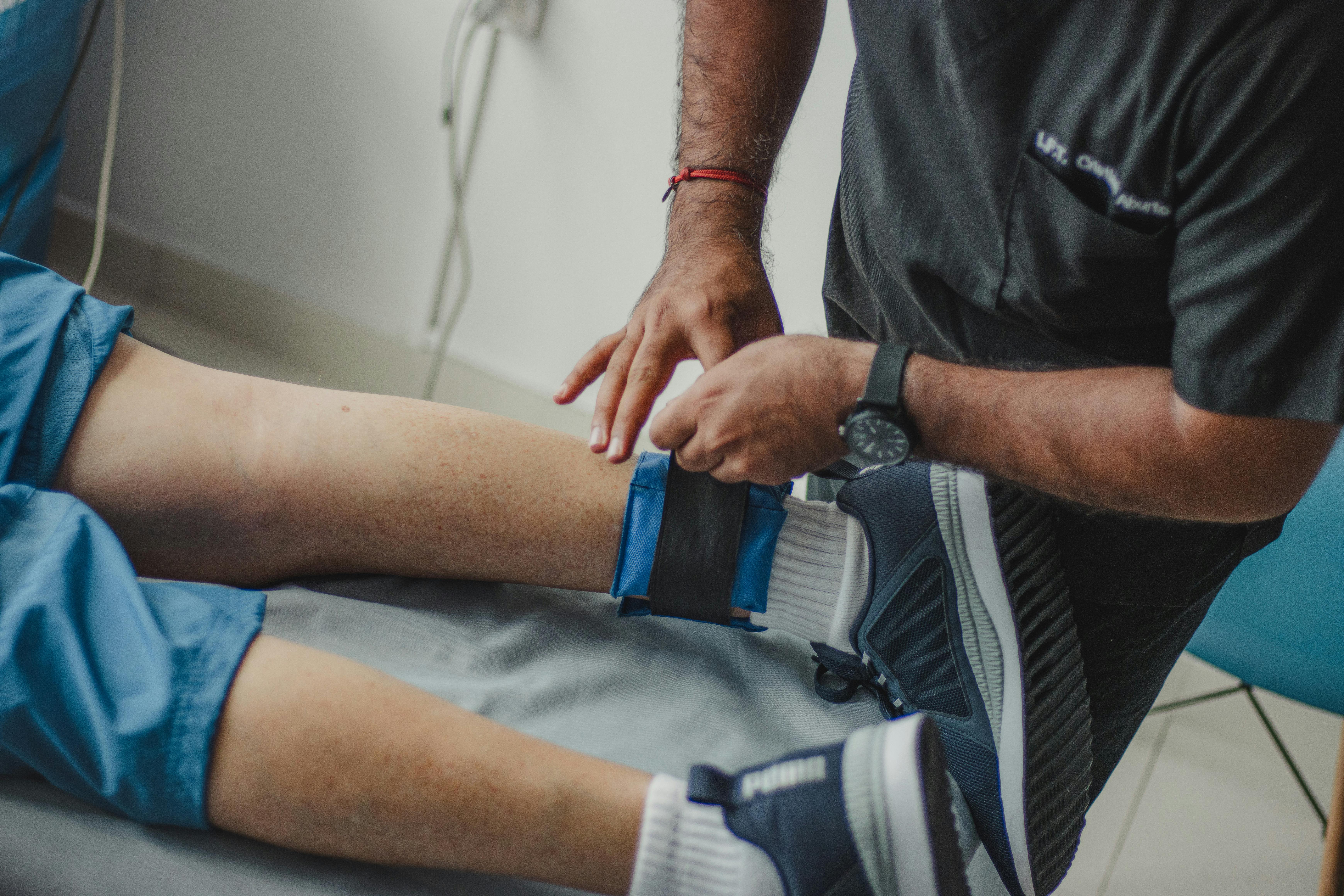Sports Medicine Patient Advisor: Your Guide to Better Athletic Care
Whether you’re an elite athlete or a weekend warrior, injury prevention and recovery are crucial for maintaining peak performance. A sports medicine patient advisor plays a pivotal role in guiding patients through rehabilitation and ensuring optimal health and recovery. This article will delve into the responsibilities of a sports medicine patient advisor, practical implementation techniques, and advanced applications that can elevate athletic care and performance.

Understanding the Fundamentals
Sports medicine focuses on preventing, diagnosing, and treating injuries related to physical activity. A sports medicine patient advisor helps patients navigate the complexities of treatment, rehabilitation, and recovery to get back to their athletic pursuits faster and more safely. The primary goal is to ensure that patients receive expert advice on the best treatment plans, whether it’s through physical therapy, injury prevention strategies, or advanced recovery methods.
The importance of a sports medicine patient advisor lies in their ability to tailor a recovery program to each patient’s specific needs. They bridge the gap between medical professionals and patients, ensuring that the prescribed treatments align with the patient’s goals and physical capabilities.
1.1 The Role of a Sports Medicine Patient Advisor
A sports medicine patient advisor acts as a liaison between the patient and the medical team, offering valuable guidance through the recovery process. They assist with understanding diagnoses, setting realistic recovery goals, and ensuring that the patient adheres to the recommended treatment plan. This role is crucial for individuals recovering from injuries or those looking to prevent them in the future.
Studies show that athletes who work closely with advisors have higher success rates in returning to their sport and maintaining peak performance. Advisors help demystify the complex medical jargon often associated with treatments and rehabilitation, allowing the patient to feel informed and empowered.
1.2 Key Responsibilities of a Sports Medicine Patient Advisor
The responsibilities of a sports medicine patient advisor go beyond simple patient guidance. They are involved in several stages of treatment and recovery:
- Assessment: Evaluating the patient’s condition and history.
- Treatment Planning: Collaborating with physicians to create a customized treatment strategy.
- Rehabilitation Support: Monitoring progress and suggesting adjustments based on recovery milestones.
- Prevention Advice: Offering insight into injury prevention and ongoing performance maintenance.
Practical Implementation Guide
Understanding the fundamentals is just the first step. The real challenge lies in how sports medicine patient advisors can effectively implement their knowledge and strategies in real-world situations. Below, we’ll explore actionable steps for patient advisors, along with common challenges and how to overcome them.

2.1 Actionable Steps
- Step 1: Conduct a comprehensive assessment to understand the patient’s current condition. This includes evaluating their medical history, lifestyle, and injury severity.
- Step 2: Collaborate with healthcare professionals to design a tailored treatment plan. This plan should include therapy schedules, exercises, and milestones to measure progress.
- Step 3: Regularly monitor the patient’s recovery and adjust the plan as necessary. This ensures that the patient remains on track and avoids setbacks.
2.2 Overcoming Challenges
There are several challenges that sports medicine patient advisors must navigate in their role. Here are a few common obstacles and solutions:
- Obstacle 1: Patient non-compliance with treatment plans. Solution: Advisors should educate patients on the importance of following the prescribed regimen and set realistic recovery expectations.
- Obstacle 2: Limited access to advanced medical resources. Solution: Find alternative treatments or therapies that can be done at home or in local facilities to continue progress.
- Obstacle 3: Emotional barriers to recovery. Solution: Offer psychological support or refer patients to mental health professionals specializing in sports psychology.
Advanced Applications
Once patients are familiar with basic recovery techniques, it’s time to explore advanced applications in sports medicine. These techniques are particularly beneficial for athletes looking to optimize their performance or recover from severe injuries.

3.1 Advanced Recovery Techniques
Advanced recovery techniques are designed to enhance the healing process and help athletes return to their sport in top condition. Some of the most popular methods include:
- Cryotherapy: The use of cold therapy to reduce inflammation and speed up recovery.
- Hyperbaric Oxygen Therapy: An innovative technique that uses oxygen-rich environments to improve tissue healing.
- Regenerative Medicine: Techniques such as stem cell therapy or platelet-rich plasma (PRP) to regenerate damaged tissues.
3.2 Integrating Performance Enhancement Strategies
Advanced patient advisors also incorporate performance enhancement strategies, ensuring that athletes not only recover but also reach their full potential. This involves:
- Biomechanical Analysis: Using technology to analyze movement patterns and improve efficiency.
- Strength and Conditioning Programs: Tailored fitness routines that focus on building strength and agility while minimizing the risk of injury.
- Nutrition and Hydration Guidance: Providing personalized dietary recommendations to fuel recovery and optimize performance.
Future Outlook
Sports medicine continues to evolve, with new advancements and technologies emerging each year. The future of sports medicine looks promising, especially with the integration of artificial intelligence, wearables, and personalized medicine. Athletes will have access to even more sophisticated tools for injury prevention, recovery, and performance enhancement.
As a sports medicine patient advisor, staying ahead of these trends is crucial. By embracing emerging technologies and techniques, advisors will be able to offer even better care and help athletes achieve their goals more efficiently.
Conclusion
In summary, a sports medicine patient advisor plays a vital role in the recovery and performance enhancement of athletes. By understanding the fundamentals, applying practical steps, and exploring advanced techniques, advisors can significantly improve patient outcomes. Whether you’re recovering from an injury or striving to enhance your athletic performance, a sports medicine patient advisor can be the key to your success.
If you’re an athlete or a healthcare professional, consider integrating a sports medicine patient advisor into your recovery or performance strategies. Their expertise will help you navigate the complexities of sports medicine and guide you towards a healthier, more successful future.
Frequently Asked Questions
- Q: What is the role of a sports medicine patient advisor? A: A sports medicine patient advisor helps athletes understand their diagnosis, treatment plan, and recovery process, ensuring they receive personalized care.
- Q: How do I get started with a sports medicine advisor? A: Consult with your healthcare provider to determine if a sports medicine advisor is a suitable addition to your recovery plan.
- Q: How long does the recovery process take? A: Recovery time varies depending on the injury, treatment plan, and the athlete’s adherence to the recommended regimen.
- Q: What are the costs associated with working with a sports medicine advisor? A: Costs vary depending on the advisor’s expertise, location, and the extent of the treatment plan. It’s important to check with your healthcare provider for an estimate.
- Q: How does a sports medicine patient advisor compare to other healthcare professionals? A: Unlike traditional healthcare providers, sports medicine advisors specialize in athletic injuries and recovery, offering personalized guidance to improve performance and prevent future injuries.
- Q: Is there a steep learning curve for working with a sports medicine advisor? A: The learning curve is typically minimal. Advisors are skilled in communicating complex information in a way that is easy for patients to understand and follow.
- Q: Can a sports medicine advisor help with long-term injury prevention? A: Yes, they provide ongoing guidance on how to prevent injuries through exercise, conditioning, and lifestyle modifications.
